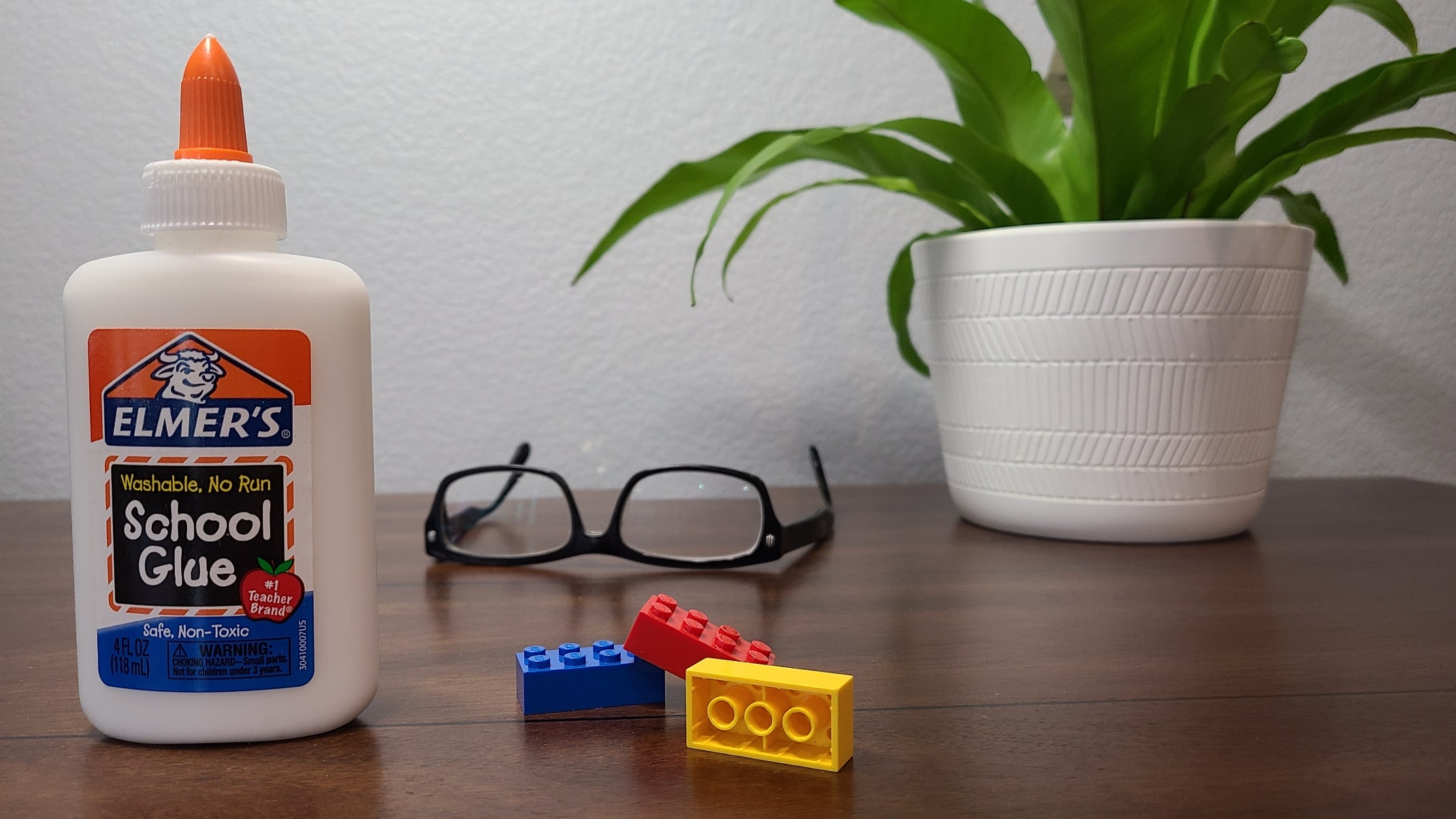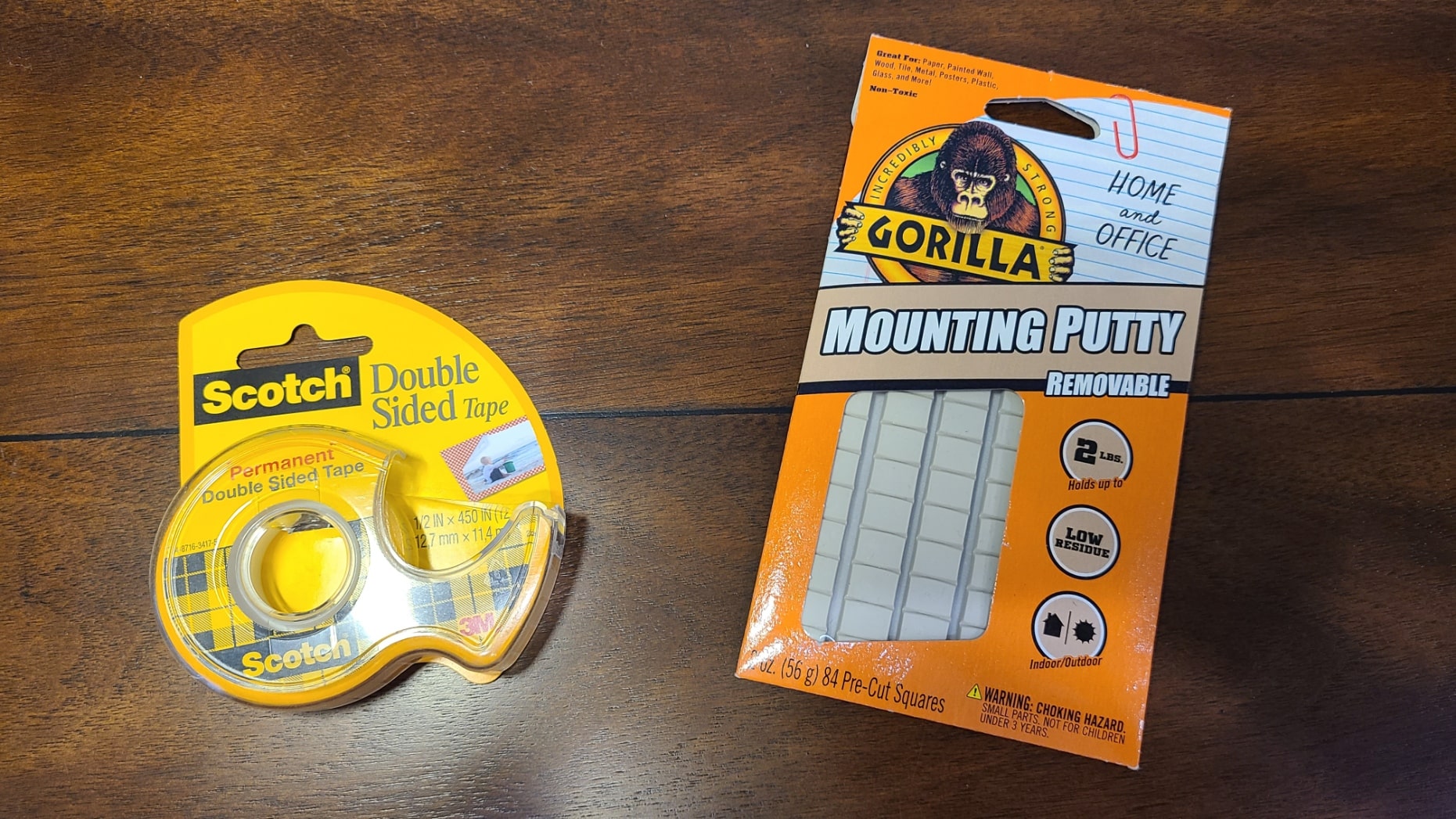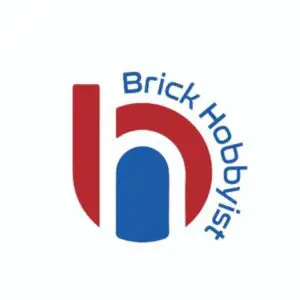
If you’re a LEGO fan, you’ve probably wondered at some point if you should glue your sets together. There’s no right or wrong answer to this question, as it depends on personal preferences. Some LEGO fans choose to glue their sets together to create a more permanent display, while others do not wish to glue them as they may want to build something else with those bricks in the future.
In this article, we’ll explore the pros and cons of gluing LEGO sets together so you can make an informed decision for your collection. There are pros and cons to both options.
The clutch power in LEGO elements should eliminate the need for gluing and the LEGO Group discourages this practice. If you think you really need to glue LEGO bricks together, then you need to decide between more permanent glues or glues that allow the sets to be taken apart in the future.
The clutch power refers to the patented system of how bricks stick together. If you would like to read more about this, I wrote an article “How Do LEGO Bricks Stick Together“, that goes into more depth on this subject.
Gluing LEGO sets together can make for a neater and more polished display, as there are no gaps between pieces. It can also make the sets more sturdy and less likely to fall apart if handled roughly. On the downside, gluing LEGO sets together means you can’t take them apart and rebuild them later on.
If you decide to glue your LEGO sets together, use a strong adhesive that won’t damage the plastic bricks. Many LEGO fans recommend using cyanoacrylate glue, commonly known as CA glue or superglue.
There may be certain situations where you may need to glue some more of the fragile sets you are displaying. Maybe some pieces are prone to coming off. Maybe the cat passes by it and knocks off smaller, fragile parts. In this case, I could see myself gluing a few pieces. I like to display my sets and usually do so in a nice glass case. this eliminates any pieces accidentally falling off.
The Benefit Of Gluing LEGO Sets Together
There are several benefits to gluing LEGO sets together. For one, it can make for a neater and more polished display. There are no gaps between pieces, and it’s less likely that the sets will fall apart if handled roughly. Glueing LEGO sets together can also make them more sturdy.
On the downside, gluing LEGO sets together means you can’t take them apart and rebuild them later. If you decide to glue your LEGO sets together, use an adhesive that won’t damage the plastic bricks. Many LEGO fans recommend using cyanoacrylate glue, commonly known as CA glue or superglue.
What Kind Of Glue To Use On LEGO Sets
Several types of adhesive can be used on LEGO sets. Below are some of the most common ones.
Hot Glue
Hot glue is fine to use on LEGO, it’s a quick-drying adhesive perfect for small repairs. It’s not as strong as CA glue or epoxy glue, but it’s a good option for bonding LEGO sets temporarily.
The pieces can come apart easily and the residue peels right off. You can use a small amount of isopropyl alcohol which can be sprayed on to remove any stubborn residue that will not come off easily.
Ensure the hot glue gun is set on a cool setting so as not to damage or mark the plastic. Check out the price on Amazon for this Boswell hot glue gun which features adjustable temperature control.
CA Adhesives (Cyanoacrylate)
These adhesives are permanent and should be used on LEGO sets you want to put together to display and never take them apart. These adhesives are so strong that attempting to take them apart after being glued, may damage the LEGO elements.
Cyanoacrylate glue, commonly known as CA glue or superglue, is a very strong adhesive that bonds quickly and easily. It’s perfect for gluing LEGO sets together.
The Starbound brand of instant CA adhesive is a good choice here and is Amazon’s choice. Check out the latest price for this Adhesive on Amazon.
Epoxy Glue
Epoxy glue is a durable, long-lasting adhesive perfect for heavy-duty projects. It can bond LEGO sets together and other materials like metal and wood.
A popular example of epoxy glue is Gorilla glue. This is a more permanent option compared to the other options mentioned above. Check out the latest price for Gorilla glue on Amazon.
Le-Glue
You may have heard of Le-Glue from the TV show SHark Tank which it was featured and received a business deal. Created by ten-year old Tripp Philips, it was specifically created to glue LEGO pieces together. This product is a perfect solution for those you want to glue their bricks together as it is non-permanant and non-toxic unlike a lot of its competitors.
Le-Glue is very easy to use. Just apply to the LEGO brick with a brush or cotton swab and put together as normal. The glue sets within one hour and cures within 24 hours.
Check out the latest price for Le-Glue on Amazon.
So, which type of glue should you use on your LEGO sets? It all depends on your needs and preferences. Just be sure to choose an adhesive that will bond well and is safe for plastic.
Tips For Gluing LEGO Sets
If you do decide to glue your LEGO sets together, here are some tips on how to do it:
- Be sure to use a strong adhesive that won’t damage the plastic bricks. Many LEGO fans recommend using cyanoacrylate glue, commonly known as CA glue or superglue.
- Make sure the surfaces you’re gluing are clean and dry. Any dirt or oils on the plastic will prevent the adhesive from sticking properly.
- Use glue sparingly, making sure to get it on the tubes and studs only so you don’t have glue squeezing out of the cracks onto the bricks and making a mess.
- Make sure you are pressing the pieces firmly together so there aren’t any gaps between the bricks.
So, now you know how to glue your LEGO sets together! Just be sure to follow these tips closely to ensure a strong and lasting bond.
The Pros And Cons Of Gluing LEGO Sets Together
There are both pros and cons to gluing LEGO sets together. On the plus side, glued sets are stronger than unglued sets and can be less likely to fall apart. They’re also more compact and easier to transport. On the downside, glued sets can be more delicate and difficult to modify. If you’re not careful, you may also damage or break the bricks when trying to take the set apart. So, it’s important to weigh the pros and cons before deciding whether or not to glue your LEGO sets together.
| PROS | CONS |
|---|---|
| Glued LEGO sets are stronger and less likely to fall apart. | Glued LEGO sets are more difficult to take apart. |
| They’re more compact and easier to transport. | If you’re not careful, you may damage or break the bricks when trying to take the set apart. |
| Glued sets can be more delicate, but they’re also easier to modify. | Glue can cause the LEGO bricks to become discolored over time. |
Glue Alternatives
If you are against gluing your LEGO pieces, several alternatives work just a swell and may not have been thought of.
One of these options is mounting putty. I have used this before and always have some on standby if needed. It can be used on all LEGO elements and is particularly useful on Minifigures you want to place somewhere with no studs for them to stand on.
Another method that I have used on occasion, is double-sided tape. This works well in some situations. I used this method while creating a featured image for an article on this website. For the article entitled “Is LEGO A Fortune 500 Company?”. As you can see I wrote “Fortune 500” with LEGO bricks. I had trouble lining up all the bricks so there were no gaps between the bricks. I then thought of using small pieces of double-sided tape I had lying around; it worked perfectly!
So if you are deadly against gluing your LEGO, there are some alternatives that you may not have considered.

Can You Hot Glue LEGO?
Hot glue can be used to glue LEGO as long as you select a cooler setting on the hot glue gun as to not damage the plastic.
Can You Glue Already Built Sets?
It is better to glue LEGO sets together when you are actually building the set int he beginning, rather than going back at a later date to do it.
Having said this, there is a method you can try that takes a somewhat steady hand and a lot of patience. This method used by a lot of plastic modelers is to use very thin Cyanoacrylate glue along the edges with a needle applicator or toothpick. Use very small amounts of glue along the edges where pieces are joined and capillary action will suck it in between before it hardens.
For those not sure what capillary action is, it is the process of a liquid flowing in a narrow space without the assistance of external forces like gravity.
Another option is to use glue spray. Try to focus spraying the glue on the edges where bricks are sticking to each other. Have a damp cloth reay to wipe off any excess glue that is on the actual bricks instead on in between the bricks.
How Do You Remove Glue From LEGO Bricks?
If you’ve glued your LEGO sets together and now want to take them apart, there are a few things you can try.
First, depending on what type of glue was used, some glues will dissolve when placed in warm water – not hot water as it may damage the LEGO.
Second, if that doesn’t work, then use Isopropyl alcohol. Be sure to use Isopropyl alcohol instead of Isopropyl Acetone so you won’t damage the bricks. If you are not sure of the difference between the two, then take a look at this article that explains the difference between acetone and alcohol.
Third, if the above methods don’t work then try heating the glue with a hair dryer or heat gun. This can sometimes soften the glue enough to allow the bricks to be pried apart.
You can try using a hobby knife or other sharp tool to cut through the glue carefully. This may damage the bricks, but it’s often the only way to get them apart.
Final Thoughts
There are a few things to consider before gluing your LEGO sets together. First, you’ll need to choose the right type of glue for the result you require. If you intend to display your sets and never touch them again, then use a more permanent glue, if you may want to take them apart later, use a temporary glue like Le-Glue.
Second, you’ll need to follow the tips in this article for the best results. Finally, you should know the pros and cons of gluing LEGO sets together. So, if you’re thinking about gluing your LEGO sets together, keep these things in mind!
So, should you glue your LEGO sets together? Ultimately, it’s up to you! Weigh the pros and cons and decide what’s best for you and your collection.
